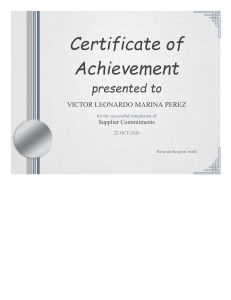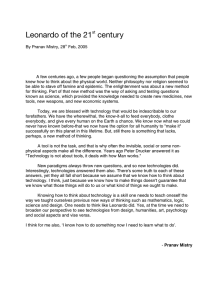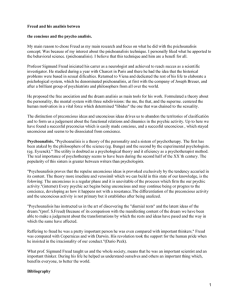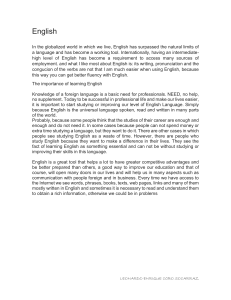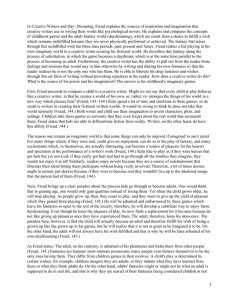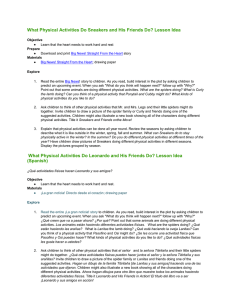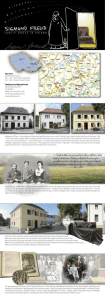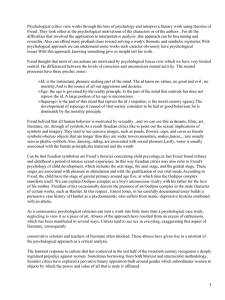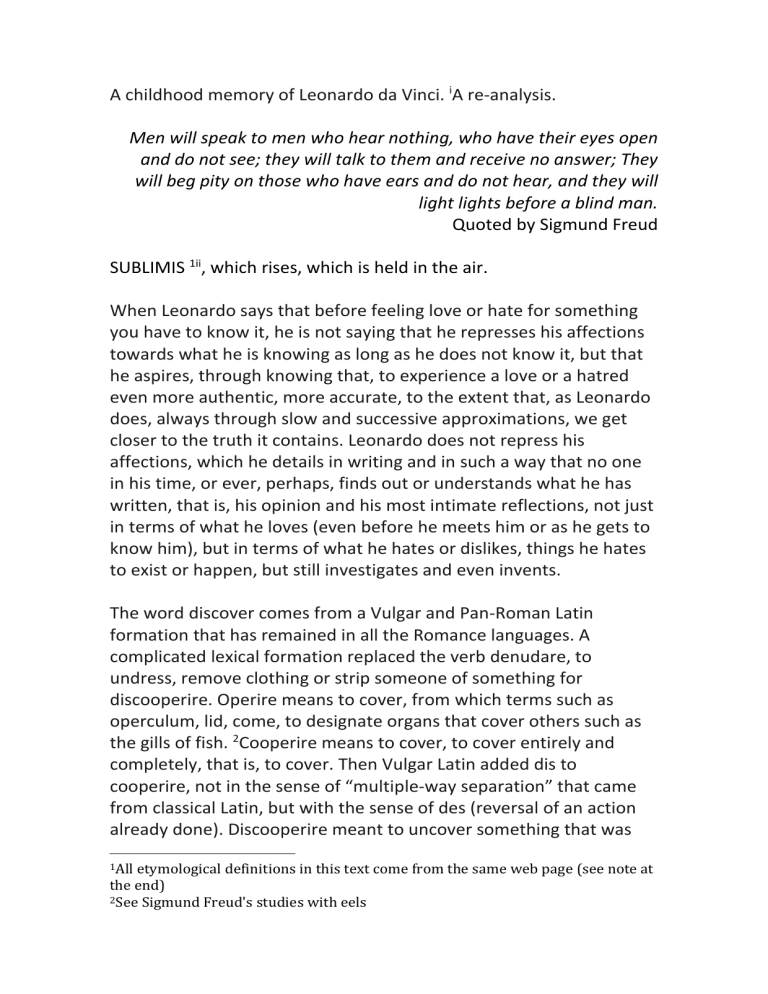
A childhood memory of Leonardo da Vinci. iA re-analysis. Men will speak to men who hear nothing, who have their eyes open and do not see; they will talk to them and receive no answer; They will beg pity on those who have ears and do not hear, and they will light lights before a blind man. Quoted by Sigmund Freud SUBLIMIS 1ii, which rises, which is held in the air. When Leonardo says that before feeling love or hate for something you have to know it, he is not saying that he represses his affections towards what he is knowing as long as he does not know it, but that he aspires, through knowing that, to experience a love or a hatred even more authentic, more accurate, to the extent that, as Leonardo does, always through slow and successive approximations, we get closer to the truth it contains. Leonardo does not repress his affections, which he details in writing and in such a way that no one in his time, or ever, perhaps, finds out or understands what he has written, that is, his opinion and his most intimate reflections, not just in terms of what he loves (even before he meets him or as he gets to know him), but in terms of what he hates or dislikes, things he hates to exist or happen, but still investigates and even invents. The word discover comes from a Vulgar and Pan-Roman Latin formation that has remained in all the Romance languages. A complicated lexical formation replaced the verb denudare, to undress, remove clothing or strip someone of something for discooperire. Operire means to cover, from which terms such as operculum, lid, come, to designate organs that cover others such as the gills of fish. 2Cooperire means to cover, to cover entirely and completely, that is, to cover. Then Vulgar Latin added dis to cooperire, not in the sense of “multiple-way separation” that came from classical Latin, but with the sense of des (reversal of an action already done). Discooperire meant to uncover something that was 1All etymological definitions in this text come from the same web page (see note at the end) 2See Sigmund Freud's studies with eels previously it had covered up or remained hidden, hence our word "discover." What meaning does the word "discover" have for us today? In what sense is someone a discoverer? Is it someone who investigates something and reveals it to us, makes it clear to us, presents it to us or re-presents it to us or is it someone who undresses us, strips us of something and then uses us as a cover to invest, reverse, a action like covering something, which had already been done? Can we not say that while Leonardo investigated something to discern that something for us and then sift through it, Freud dedicated himself to discovering us, re-inverting and re-investing us, stripping us to later use that as a cover and/or, from the Greek , calyptra, to "cover", "cover", himself, or perhaps someone ? ( Sifting means separating the bad seed from the good.) It seems that Freud was never entirely clear whether he loved or hated what he was investigating, nor what he aspired to with his projects. The "Freudian Academy", unlike the Vincentian, was not simply a "game", a mere entertainment with which Da Vinci wasted his "time." Unlike Freud, it seems that, as Freud points out, "Leonardo came to take up his brushes only reluctantly, leaving the few pictorial works he undertook largely unfinished and unconcerned about their subsequent fate... his longing for knowledge remained oriented towards the outside world, as if there were something that kept him from the investigation of the psychic life of man. In the 'Vincian Academy', for which he drew artistically complicated emblems, a very small place was granted to psychology." Freud also says: "Investigated instead of working and creating... as Solmi believes, driven by the desire to perfect his art, studying the qualities and laws of light, colors, shadows and perspective, with the in order to achieve the highest mastery in the imitation of Nature and show others the path that could lead them to it." But then he adds: "He probably already had an exaggerated idea of the value of this knowledge for the artist." 3And then: "Later, and following the orientation of the pictorial needs, he went on to the external investigation of the objects of painting, … and then to that of their internal structure and their vital functions, elements that are also expressed in the appearance and they demand a representation of art. ... But his longing for knowledge remained oriented towards the outside world, as if there were something that kept him away from the investigation of the psychic life of man." Freud says that Leonardo "barely granted a small place" to psychology, as can be seen in his Monna Lisa (and this is an irony), to which he granted only 4 years of his life!, or in The Last Supper, in which Leonardo lavished himself between 4 and 6 years, according to the different sources, while his Saint Anne, with the Virgin or in the Child or The Virgin, the Child Jesus and Saint Anne was, apparently, a commission that was made to Leonardo in 1499, of which there were some cartoons like the one on display at the National Gallery, and finally, the painting dating from between 1508 and 1510, lacking, as can be seen, any hint of "psychological" deepening of the characters represented or portrayed... For Freud his knowledge, that of Leonardo, was oriented to the outside world, to the world of the apparent, of fiction. The point is that Leonardo did not intend to "create ." He was not interested in "the creative" at all, as could be the case of Botticelli whom Leonardo, as a painter, rightly reproaches for wanting to be "creative" and not conforming to the study and representation of things as they are. His aim was to know and copy from nature, from what was already created. But in Freud, the artistic that he sees, or sometimes seems to see, is confused as something merely visual, external, apparent -which he later blames on the painter, perhaps in terms of "fixation", of fixing his eyes on-, with the "creativity." From crerare derives the verb to engender. And beget is made up of in (penetrate) and generate (produce.) But produce, from Latin, comes from the Latin verb producere: pro, towards and ducere, guide, drive. 3I cannot fathom how the importance that Leonardo attached to the study of all those things that Freud lists could be conceived as "exaggerated." The results of this magnificent "exaggeration" are visible to all of us. Which means that it seems that there are two meanings to beget and to produce. One requires penetration, and the other is simply spawning something to go or guide or drive forward, and there is no talk of "penetration." Because penetration is entering the interior of something, entering reaching the bottom. Today we speak only of "productivity" without there being any need to get to the bottom of it. Freud also seems not to know very well when one should speak of generating something in one direction or the other. "... The child's desire to know testifies to his tireless questioning, which seems so enigmatic to the adult while he does not realize that all these questions are nothing more than detours around a central question and that they cannot have an end because the child substitutes them a single question, which, however, he will never pose directly. When the child reaches a more advanced period of childhood and has expanded his knowledge, this manifestation of the desire to know is frequently suddenly interrupted." No, what is interrupted is not his desire or desire to know, but a new stage begins that implies that the child already knows something, that he has already understood something, which for the moment is enough for him. 4The child does not want to know more about this, not for now, because what could encyclopedic knowledge contribute to him, and/or graphically represented or visualized and/or "adultified" on that specific topic? His previous questions about the origin of man and things, about his own origin, also about the sexual, came from his authentic emotional and intellectual curiosity. In this new stage, the child focuses his attention on another series of things that intrigue him, that the environment offers him or sometimes spares him, and for which he is completely receptive, and that, although they are related to those other somewhat earlier, because all the things that man gets to know, to know, are related to each other, yes they are a detour until something inside him leads him to the full satisfaction of some desire, to experience with his own body what is that, for example. It is not a desire that the child has repressed, it is simply a desire. On the other hand, it seems to me quite obvious that even when the child manages to ask, to use the newly acquired 4Confusion of tongues, S. Ferenczi language to speak, to communicate orally and to ask, the child's reflections and intuitions about himself and everything else begin as soon as and/or at the same time that their "thinking apparatus" is developing affectively, sensorially and cognitively, which initially is only emotional. The child would be considering these same questions, but perhaps in a somewhat "diffuse" or "confused" way, and although relational, intimate. That look that the infant gives to his mother is also a way of asking, what is all this so incredibly beautiful, mom, that is happening to me/us? What are you mom, and what am I and who would become my dad, and what is this that I feed on? Because human communication begins long before we use language. "Psychoanalytic research provides us with a complete explanation of all this, showing us that many children, perhaps the majority and certainly the most intelligent, go through a stage from the age of three that we could describe as a period of infantile sexual investigation. Desire of knowing does not arise, as far as we know, spontaneously in children of this age, but is provoked by the impression of an important event: the birth of a sibling or the fear of such a possibility, considered by the child as a threat to his interests selfish … The investigation falls on the problem of the origin of children, as if the childish subject were looking for a way to avoid such an unwanted event. We thus find out to our astonishment that the child refuses to believe the data that is usually provided to him on this matter; for example, the fable of the stork, so mythologically significant, and that this act of disbelief initiates his intellectual independence and sometimes his opposition to the adult, who will never forgive his deception." Here Freud describes his own experience regarding his childhood research. Freud tells us that "... To my knowledge, only once did Leonardo include something about his childhood in his scientific notes." What may seem true if we take as a reference only his notes. But not if we take as a reference Leonardo's multiple works or what we know about his "infantilism." And he continues: "In a place where he deals with the flight of vultures he is suddenly interrupted to follow a recollection of his earliest childhood years that arises in his memory: 'It seems as if I were predestined to deal so extensively with the vulture, for one of the earliest recollections of my childhood is that, while I was in the cradle, one of these animals came up to me, opened my mouth with its tail, and hit me with it, repeatedly, between the lips.'” Freud says : "We are, therefore, before a childhood memory and certainly very unique, both for its content and for the time in which it is located. It is perhaps not impossible for an individual to retain memories of the time of infancy, but neither can it be considered as proven thing." It may very well be conceivable that Leonardo had such an unusually early memory, or it may be that Leonardo's lactation lasted a few years, or it may be that Leonardo imagined that it took place when he was in the cradle and not in bed, or that he wanted to place that memory that could have happened to him because Leonardo played with the birds, at a very early time, for whatever unconscious reasons they were. Freud follows. “In any case, the content of this memory of Leonardo, that is, the fact that a vulture approached his cradle and opened his mouth with its tail, seems to us so improbable and fabulous, that we are inclined to accept a different hypothesis, with which we avoid the two difficulties indicated above. The scene with the vulture would not constitute a memory of Leonardo, but an afterthought transferred by him to his childhood. Here Freud insists on confusing the fact that we can have a memory of something that has really happened to us, no matter how much our memory is not exact, with what we fantasize, imagine, want to believe has happened to us. "The childhood memories of men sometimes have no other origin. Instead of being reproduced from the moment they are imprinted, as happens with the conscious memories of adulthood, they are evoked after a long time, when childhood has passed already past, and then they appear deformed, falsified and put at the service of ulterior tendencies, so that they are not strictly distinguishable from fantasies." (As if adults could not distort, forget or falsify their "memories" of what could have happened to them yesterday.) And then he says: "The best way we can explain its nature is by thinking about the birth of the historical chronicle in ancient peoples ... While the town was small and weak, it did not think of writing its history and devoted itself to tilling its soil, defending its existence against its neighbors, expanding its domains and enriching itself. This was a heroic era without history." And then: "But it was followed by another in which the people became self-aware, felt rich and powerful, and felt the need to find out where they came from and how they got to where they are today. The Story, which had begun by simply noting the events of the present, he then turned his gaze towards the past, brought together traditions and legends, interpreted the survivals of the past in uses and customs and thus created a history of the prehistoric past. But this prehistory speaks of constituting, hopelessly, rather an expression of contemporary opinions and desires than an image of the past, since much of it had fallen into oblivion, another was preserved distorted, many survivals were wrongly interpreted under the influence of the circumstances of the moment and above all not history was written for reasons of objective illustration, but with the purpose of acting on contemporaries." In other words, 1. Suddenly, for Freud, there is no point of truth, not even symbolic, neither in legends, nor in tales, nor in myths, nor in the oral transmission that people used before appearing writing. And then, 2. Perhaps Freud is, unconsciously speaking of his own invention, psychoanalysis: which, according to him, would serve to act on the contemporary, and no longer to illustrate in an "objective" way those memories and events of the past that can be that they are true, regardless of how we want to interpret them. "The conscious memory that men preserve of the events of their maturity can be compared to this redaction of History, and their childhood memories correspond, both by their origin and by their authenticity, to the history of the primitive age of a people, history much later than the facts and biasedly rectified." In other words, Freud (and later also others...), attributes to the patient and the unconscious the tendentiousness that is theirs. I do not see in this memory of Leonardo any tendentiousness, other than that it is related to his desire to investigate birds, investigate their flight, everything about them, and fly. In any case, he is innocent as long as he does not suspect that his memory could in the future be interpreted as a sign of homosexuality. "This fantasy has a singularly passive character and recalls certain dreams and fantasies of women or passive homosexuals (those who play the female role in the sex trade)." It does not seem to me that there can be any relationship between the "passive fantasy" of women with the passive fantasy of homosexuals who present themselves as women to trade, beyond the fact that, as Freud well points out, they would only be fantasies: passivity strict "sexual" cannot be given, except in the context of necrophilia. And I also don't understand why it is surprising that a child might have a "uniquely passive" memory or fantasy. Can't a man have such a fantasy without being said to necessarily be a "sexual" or "homo-sexual" passive fantasy? But then Freud adds: "...Behind the fantasy nothing else is hidden than a reminiscence of the act of suckling from the mother's breast or being suckled by the mother, a beautiful human scene that Leonardo, like so many other painters, reproduced in his paintings of the Madonna with Child." 1. In the event that we see in this memory a reminiscence of the breastfeeding scene, in breastfeeding there is no completely passive attitude on the part of the child. Precisely, if the child does not suck, if he does not make that effort, he cannot receive food. The whole body, the mind of the child, actively participate in the moment. And 2. How is it that from talking about the man having to have had a fantasy of a homosexual type, we come to the scene of breastfeeding. 5It seems to me that it is indisputable that any situation that is established between two, Freud interprets it as a relationship in which one of the two dominates and the other is subjugated, or simply submits. Freud naturally does not understand what goes through the mind of someone who "enjoys" having to, according to him, "submit": "In any case, it is still incomprehensible to us that this reminiscence, of equal importance in both sexes, was transformed by Leonardo in a passive homosexual fantasy." And he continues: "Where does this animal come from and how does it appear included in the place where we find it? An idea arises in us, faced with this question, so distant at first sight, that we almost feel inclined to renounce it. In the sacred hieroglyphs of the ancient Egyptians, the image corresponding to the mother is always that of 5In his paper on the case of little Hans, Freud says that the child's identification of the cow's udders with the penis, with his "little thing", is repugnant to the mind. But here Sigmund Freud does exactly the same thing that that child did in his naivety. the vulture.The Egyptians also worshiped a mother deity with the head of a vulture or with several heads, of which at least one was a vulture. The name of this goddess was pronounced Mut, a circumstance which makes us think of a possible connection of it with our word 'mother' (Mutter), unless it be a question of a purely casual similarity. relation to the concept of mother, but at first we do not see how this circumstance will help us in our work of interpretation, since we cannot attribute such knowledge to Leonardo, since the translation of the hieroglyphs Physics did not become possible until the discoveries of François Champollion. … We are also interested in finding out how the ancient Egyptians came to choose the vulture as a symbol of motherhood. … the vulture was considered to be the symbol of motherhood, due to the belief that there were only female vultures and that this species of birds lacked males. The Natural History of the ancients also knew a counterpart to this limitation, since it held that among the beetles, also worshiped by the Egyptians as divinities, there were only males. … But then, how was the fertilization of the vultures carried out, if there were only females? Horapolio's book eases this difficulty for us, affirming that, at a certain time of the year, these birds remain motionless in the air, open their vaginas and are fertilized by the wind. … Among such books there was no lack of works, both ancient and contemporary, of Natural Sciences, and all of them already existed in print at that time, being, in addition, Milan, residence of our artist, the main focus of the nascent art of printing in Italy. 'Caeterum hanc fabulam de vulturibus cupide amplexi sunt Patres Ecclesiastici, ut ita argument ex rerum natura petito refutarent eos, qui Virginis partum negabant; itaque apud omnes fere hujus rei mentio occurrit.' 'But this is a vulture story.' ... the fable of the unisexuality and the fertilization of the vultures was not limited to an indifferent anecdote, such as that of the beetles, since the fathers of the Church seized it to use it as an argument taken from Natural History against the who doubted the Sacred History [of Mary's virginity]. If, according to the most reliable data of antiquity, vultures were impregnated by the wind, why couldn't something analogous to a human female once have happened? Such an application caused "almost all" the fathers of the Church to recount the fable of the vulture in their writings, and thus we can no longer doubt that through such powerful patrons it also reached Leonardo. … Having once read in a Father of the Church or in a Natural History book that all vultures were female and reproduced without needing the cooperation of the male, a memory arose in him that was transformed into the cited fantasy; but whose meaning was that he too had been such a vulture's young, that he had had a mother, but no father, and to this memory was later added, in the only way in which such early impressions can express themselves, an echo of the pleasure found in the suckling of the maternal breast. The relationship of his fantasy with the representation of the Virgin nursing the Child, so pleasing to all artists, had to contribute to making it highly valuable and important for Leonardo, because through it he identified himself with the Child Jesus, consolation and redeemer of all and not from a single woman." Indeed, the fable of the female vulture that bears children without the need of a male would surely reach Leonardo's ears. And it is almost certain that, like so many others, he associated this with the idea that his mother could have fathered him without participation of his father since in fact the father was not present during his first years of life, which could have led him to identify with the child Jesus, so that we can interpret this memory of Leonardo, as he himself says, in the sense of that he was predestined to investigate that bug (and incidentally the virginity of his mother and the Virgin), perhaps to find out what was true about what was said that he could get pregnant thanks to 'the wind.' In other words, Leonardo seems to start from the astonishment or disbelief that this story caused him. Moreover, then we see that Leonardo will not only dedicate himself to investigating this peculiar bird, which they say was not a vulture but a kite, but also extends his investigation to all the birds, women and mothers and fetuses, but also to the flight of birds and to the wind. In other words, we wonder, what was in the milk of Leonardo's mut mother that incited him to want to take flight, something that this child prodigy achieved... If by any chance Leonardo had ever had a homoerotic fantasy, it seems to us quite e-seer that he sublimated it very precociously. But the most serious thing is, as we all already know, and as I mentioned before, that Leonardo was talking about a kite, and not about a vulture. However, Freud tells us about a vulture because it seems that Leonardo's book that "coincidentally" came into the hands of Freud was "a bad translation." Nothing is 100% "casual." If Freud clung to that bad translation as he did (I don't know what could have caused the translator's mistake... which we won't be able to "analyze" here), it wasn't "for nothing." He needed that bird to be a vulture and not a kite or any other bird, because if it hadn't been a vulture he wouldn't have been able to connect anything. He needed to believe that for Leonardo the precious scene for all artists, of the child suckling from the Virgin, was a homosexual act. The mother who breastfeeds a child submits and dominates the child. Cows' udders are penises, and mothers' teats are the same. Ergo, every male who is breastfed, who submits to the mother, has to be, by "default", homosexual. And all this as a result of the fact that Freud firmly believes that the activity-passivity dichotomy exists, and that he cannot conceive of himself as that newborn who was seeing himself dominated and subdued by his mother, and has to project his conflicts with his Mom, a woman who does dominate and subjugate him, in the others, in order to be able to flee in horror from what he thinks his homosexual fantasies towards his father's figure must have been and that perhaps they weren't even such. But in addition, Freud needs Leonardo to dedicate himself to the investigation of vulture birds in particular because, like eels, they seem to be animals whose way of mating and reproducing, their sexuality or genitality, was at least strange, mysterious or debatable . For Freud, Leonardo was interested in unraveling the mystery of the vulture's genitality, and not "studying the flight of the vulture", nor the possibility of flight in general. I don't remember ever seeing a drawing by Leonardo that even represented, for example, vaginal penetration by the phallus, or a drawing of a phallus (I'm not saying there can't be one); I do remember the very precise drawing of the female sexual organ and that of the fetus in the womb. That is, Leonardo feels a scientific interest, or a scientific "love" for the woman and for the woman with her baby, which is also a way of flying (or "floating"), both for the baby and for the mother. And coincidentally, breastfeeding is too. "... A brief reflection warns us now that we should not end our analysis of Leonardo's childhood fantasy with the clarification of the meaning of the vulture's tail, since it still contains several other unknowns. The most singular of all of them is that of substituting the act of suckling from the mother's breast for the fact of being breastfed 6, that is, an active situation for a passive one, and of an undoubted homosexual nature, taking into account the historical tradition that Leonardo behaved throughout his life as a man of homosexual feelings 7, we are forced to question whether this fantasy does not reveal a causal link between Leonardo's infantile relations with his mother and his later overt, albeit ideal, homosexuality. We would not dare to deduce such a connection from Leonardo's distorted memories if psychoanalytical investigations of homosexual patients would not have shown us the real existence of such a relationship, which is also intimate and necessary... Sadger 8emphasizes that the mothers of his homosexual patients were in many cases masculine women, of energetic character, who could displace the father from his position in family life or replace him. … It even seems that the existence of an energetic father guarantees the son the right decision in his choice of sexual object, that is, the choice of a sexual object of the opposite sex." It seems to me that Caterina's character could not correspond with that stereotype of a manly woman described by Sadger, who, due to her energetic character, displaces the father from "his position" and who euphemistically seems to want to tell us that Freud could have treated the son with "excessive tenderness" if not to say that he stimulated him with erotic touches and not exactly "tender" The father here, an apparently strong-willed man with a high social status, left on his own foot after impregnating this peasant girl, and, 6This that Freud explains, as either I heterosexually breastfeed you or you will breastfeed me, as a homosexual, it never happens. 7There must be endless "very reliable" sources for what Leonardo felt inside, naturally based on equally "reliable" "behavioral" observations. 8Unfortunately, about Sadger, I have found the following article https://www.revistadelibros.com/isidor-sadger-y-sigmund-freud/, which only serves us is to generate even more confusion as Freud tells us before, leaving the wife and son abandoned and longing for the presence of that father. No one displaced the father here. If the father being an energetic man depends on the son not being homosexual, the biography of many gay men denies this in a big way. nera I would say fast-paced and forceful. The mere idea that Leonardo could have inferred that his mother had conceived him by divine grace or the wind as the Child Jesus... as Freud formulates above, already reveals to us that this woman could not have been perceived by Leonardo as a manly woman. The images of women that we see in each and every one of Da Vinci's paintings speak to us of women who are no longer beautiful, but deeply dedicated to their son, tender and intelligent, and not manly. And I do not say this because I believe that Leonardo was "right" (sic) in terms of his choice of "object", but only to give a somewhat different interpretation in terms of what Freud believes he reads well and rigorously, without reaching see their own unconscious contents that are manifested in almost every line of this text. Almost anyone who is knowledgeable about Freud's mother's relationship to Freud and to Freud's elderly father, and to Freud's actions, will quickly come to the same conclusions as I have. “… The boy represses his love for his mother, substituting himself for her; that is, identifying with her and taking her own person as a model, in whose likeness she chooses her new erotic objects. In this way, he becomes homosexual or, rather, he passes into auto-erotism, since the children who are the object of his love are nothing more than substitute persons and reproductions of his own infantile person, whom he loves as his mother loved him in his early years. We say then that he finds his erotic objects along the path of narcissism, referring to the Greek legend of that adolescent named Narcissus, to whom nothing was as loved as his own image, reflected in the water, and who was transformed by the gods into the beautiful flower that still bears his name. … When he seems to pursue other boys with burning love, what he does is run away from women, who could lead him to commit infidelity. ... What for practical reasons we call homosexuality can arise from very diverse psychosexual processes of coercion, and the process we discovered is perhaps only one among many, referring only to one of the various types of 'homosexuality'. ... we have to consider it plausible that his contemporaries did not make gross mistakes when judging his personality." Here again is that contradiction of what Freud observes or deduces: was Da Vinci's mother a manly woman or, on the contrary, was she a woman who tenderly cared for his son as Da Vinci "of his 'disciples'"? What was Da Vinci "dressing"? "Having chosen them for their beauty and not for their talent, none of his disciples -Cesare de Sesto, G. Boltraffio , Andrea Salaino, Francesco Melzi, etc. - became a renowned artist. Most of them failed to acquire their own personality and disappeared without bequeathing a defined physiognomy to the history of art. Other artists who must be considered as disciples of Leonardo and continuators of his pictorial technique, thus Luini and Bazzi, called the Sodom, probably did not get to know him." Freud deduces that Leonardo chose disciples for their beauty and not for their talents as something clearly related to his tendency to homosexuality without noticing that Leonardo never really intended to create an Academy, a Vincentian school. And he also deduces that this lack of sexual activity and need that the observations of his contemporaries about the personality of this distinguished teacher, which could not be gross errors of judgment, indicates that Leonardo must have had some kind of sexual problem. Freud always tells us that he does not conceive of a man not being sexually active or not having sexual needs, that he is "passive." We already know the anecdote that Freud tells us about his father picking up the hat. For Freud, that attitude of the old father was something unimaginable in a man, unbearable and very humiliating. I think that what Freud reproached the old father, and surely with good reason, was not having been able to put a stop to his mother's continuous erotic advances towards him. In any case, I am not aware that Freud expressed indignation at his mother's behavior and her unstoppable harassment. … "The appearance of the homosexual situation in his fantasy of the vulture would then be understandable to us, since it would only mean what we have previously stated with respect to said type, and its translation would be the following: Because of my erotic relationship with my mother I have become a homosexual.... My mother put countless passionate kisses on my mouth. [That is, according to Freud, the bird opened Leonardo's mouth to kiss his lips. This fantasy of Freud and/or assigned to Leonardo, to me it seems more similar to how the mother barely brushes the baby's lips so that the baby would part them in order to breastfeed him, that is, the other way around, and before... But even so, it may be the case that the mother, once the child opens his lips, half-asleep, and that "he can't manage to s-bottle him", plays affectionately with the child as if to wake him up. In any case, Leonardo's memory does not indicate that no one had "introduced" nothing through the lips, unless it is a "secretillo", a bit of "breath", of wind, of "fresh air."] The fantasy is thus composed of two memories: that of being suckled by the mother [as we have said, this is not true] and to be kissed by her." [As we have said, this is not true either.] Here suddenly Freud sees infinite and passionate kisses that are highly erotic or even perverse, where he had previously said that he saw breastfeeding. He obviously refers to his own mother. "In the beautifully singular face of Giocondo's Florentine Monna Lisa he has most intensely fascinated and intrigued the beholders. He needed an interpretation and has found endless, but none satisfactory: ... Muther 9writes: 'That which fascinates the beholder is the demonic charm of this smile… Hundreds of poets and writers have written about this woman, who seems to smile seductively at us as soon as she lets a cold and soulless look lose herself in the distance, but none have deciphered her smile or interpreted her thoughts. in this painting, even the landscape seems submerged in a dense and ardent sensuality.'" In my life I have seen in the Mona Lisa what Muther, Mut? seems to have seen: a soulless and cold gaze? Nor do I see excessive "seduction" in that rather slightly inquisitive and reflective smile, of which you already know, and calm, or anything transmits me special "ardor", although it does density in the sense of something that has been condensed, in which it has deepened, and sensuality typical of a sufficiently mature woman who pleases herself and others, without higher "orgiastic expectations." Many seem to have been fixed to the lips of this lady, to the enigma of her smile - just as Freud was fixed to the lips of Leonardo and the "tail" of the bird: to the "external" of the bird, and not to the internal 9We don't know who Muther is. In 1909 he published Geschichte der Narelei, History of nonsense or stupidity. Footnote, Complete Works, Volume II, New Library meaning that all this had for the child Leonardo-, but few seem to have noticed how that smile connects with the expression of Leonardo's eyes, etc., as if they were unable to see a face, or a mirror there. And yet, later Freud clarifies us: "... Leaving the Gioconda's physiognomic enigma unsolved, we will record the undoubted fact that her smile 10fascinated the artist with no less intensity than all those who have contemplated her in the four hundred years that have elapsed since then . The enigmatic smile returns, from this moment on, in all his paintings and in those of his disciples In the case of a portrait, we cannot suppose that Leonardo lent such an expressive physiognomic feature to the face of the sitter without, in reality, We will have to admit, then, that Leonardo found such a smile in his model [surely the mother] and was so captivated by her attractiveness, that from that moment on he adorned all the free creations of his fantasy with it. 11by A. Konstantinowa in the following 10Your smile. The inner one, the one that Leonardo had been looking for for a long time, investigating, that of his beautiful mother, that smile in which he had felt loved, alive and reflected as a human being 11 La Gioconda was painted by Leonardo between 1503 and 1516 or 1519. In 1506 he received another commission and left this canvas unfinished. He never delivered it to his client, Francesco del Giocondo. The Burlington House Cartoon, never finished either, was created between 1500-1501 and 1505. And The Virgin, Child and Saint Anne, between 1510 and 1513. As can be clearly seen, the Madonna on the Cartoon already has a similar smile. to that of La Gioconda. On Wikipedia it is said that it is "a life-size cartoon that combines two popular themes in Florentine painting of the fifteenth century: the Virgin (Mary) and Child with Saint John the Baptist (son of the relative of Mary Elizabeth) and the Virgin and the Child with Saint Anne (Mary's mother).In this way, the three generations of Christ's family are represented: Saint Anne has her daughter Mary on her knees and the latter entertains the Child who turns to Saint John . There is a subtle interplay between the gazes of the four figures, with Saint Anne smiling at her daughter Mary, while her eyes are fixed on her son, whom Saint John is also looking at. Santa Ana gives the Virgin a strange look, full of feeling, as if she already imagined the sufferings that Mary will have to endure. There is little clarity in the delineation of the four bodies; the heads of the two women, in particular, seem to emerge from the same body. Leonardo strove to reproduce a polycentric sense of movement, making the two characters merge into a single complex, in which the head of Saint Anne [perhaps Leonardo's paternal grandmother] stands out. The Virgin Mary's expression is extraordinarily tender, but at the same time the face has a majestic, unearthly beauty that suggests deep maternal devotion. The enigmatic gesture of Saint Anne pointing her index finger towards the sky appears again in two of Leonardo's last paintings, his Saint John the Baptist and his Bacchus, and is considered the quintessential Leonardesque gesture. It seems to suggest that there are feelings and thoughts that are beyond normal human understanding. The landscape in the background is barely outlined. The style is reminiscent of The Last Supper and the monumental figures of the apostles represented in it. Some authors have perceived in this drawing the influence of classical sculpture." In Leonardo Da Vinci's Imaginary Inversion, Julia Virgós quotes Freud, saying, "Freud gives an account in La Gioconda of the meeting of two elements in the life of the woman: 'the reserve and the seduction, the tenderness full of surrender and the sensuality in ruthless stalking that devours the man like something foreign'. It is from the painting of La Gioconda that Leonardo's activity becomes fruitful again, and he transfers that same strange smile and his particular look to all the faces he later draws. 'The deepening of the features of Monna Lisa would have prompted Leonardo to capture the composition of Santa Ana from his fantasy. Indeed, if the smile of La Gioconda summoned him to the memory of his mother, we would understand that this prompted him from the beginning to create a deification of motherhood and to return to the mother the smile that he had found in the noble lady.'" No I want to cite another "Lacanian study" that wants to interpret Leonardo also from Freud's point of view, but here too assisted by Lacan's erudition, just as Virgos tries to do, which follows its own analysis thus: "Lacan takes the L scheme to indicate the four places in play through the box. Santa Ana is located in the place of the Other, since she is in the third place in front of the imaginary axis in which the Virgin and the child are located by the action of idealized love, and finally the lamb, which represents the object of sacrifice, occupies the fourth place, that of the subject, but also that of death. In the painting you can perceive a semi-symbiosis in the bodies of Santa Ana and the Virgin. "It's kind of a double." A work that is in turn the double of another unfinished one: the Burlington House cartoon in London, whose composition differs from the previous one. In it, the women appear even more united. Leonardo felt the need to eliminate this fusion and San Juan is replaced by the lamb. In this fourth term, Lacan says, the theme of death must be found. This is "what will kill Leonardo's sexuality." Santa Ana shows the raised finger, a gesture that is found in all of Leonardo's work, which Lacan translates as the indication of that lack of being, manque-a-être. Lacan will here give his version of Leonardo's inversion, leaving the question of sexual inversion in suspense and using that term to highlight the prevalent character of the imaginary relationship for da Vinci, presented in his notebook annotations. Annotations made in mirror. "He directs and orders himself from his imaginary other." A mirage relationship. Lacan points out that the relation of identification of the self with the other that was inaugurated in Leonardo is essential to understand how the identifications from which the subject's self progresses are constituted. And even more, correlative to all sublimation is a process of desubjectivation or naturalization of the Other, in which we see an inversion of the relations between the self and the other take place on the imaginary plane. way: 'During the long time that the master devoted to the portrait of Monna Lisa, he was infused with such an intense involvement of feeling in the enc before that female face, which later transferred Lacan attributes Leonardo's intense creative energy "to the way of conceiving nature whose presence has to be grasped. It is the absolutely primordial element. It is an other to be opposed whose signs one tries to decipher, becoming its double, and if it can so to speak, its co-creator". What can we extract from all this without bringing, to make matters worse, the respective Freudo-Lacanian or Lacan-Feudian elaborations, of the phallic mothers or the obvious, ominous, narcissistic, of Leonardo? In the first place, that the homosexuality attributed by Freud to Leonardo, Lacan suddenly converts it into the simple mirror calligraphy (in-version of calligraphy) that Leonardo uses to write his copious "notes", and that in principle means nothing more than that: he invests it. Lacan thus leaves in suspense the idea that Leonardo suffered from any other type of "in-version." But he tells us: "He directs and orders himself from his imaginary other." The author of the article clarifies that, according to Lacan: "the relationship of identification of the self with the other that was inaugurated in Leonardo is essential to understand how the identifications from which the subject's self progresses are constituted. And even more , correlative to all sublimation is a process of desubjectivation or naturalization of the Other, in which we see an inversion of the relations between the self and the other take place on the imaginary plane." Which is very easy to understand, given that what Leonardo inaugurates is exactly what each and every one of us inaugurates, even before we were born, except that Leonardo was a genius, something that not all of us can become. When Lacan says that "Leonardo's intense creative energy was due" to the way of conceiving the nature whose presence has to be grasped. It is the absolutely essential element. It is an other that must be opposed whose signs are trying to decipher, becoming its double, and if it can be said that way, its cocreator.", the only thing he is talking about is empathizing, co-creating each other, that is to say, to love, and any other interpretation that you want to give to Leonardo's works, are not going to make us dizzy or that we too start to "in-quire ." Lacan says nothing about Freud's tremendous error, but simply goes on to tell us about it, but in another "way", he gives us his -version- in, which, as I say, is not even worth sharing, because here there is no phallic mother either. none and the finger pointing upwards, towards the sky, is not an index of anything other than pointing upwards, that is, towards the sky, and towards anywhere, because it does not matter, so that we look at everything once and for all that which is far beyond our boundless narcissism of wanting at all costs to finish the damn work and thereby become "famous." It is here, Lacan wanted to say, that, deep down, he understands, "where at last, Leonardo's (and Freud's) sexuality die." Because the self and the "imaginary" other are one, and the only thing to do is start investigating; there is no "time" for l'autre: you have to start Flying right now... them - especially the enigmatic smile and the very singular look - to all the faces that he later had to paint or draw. all in La Virgen con el Niño y Santa Ana, also preserved in this same museum.'" For Freud, Leonardo's identification with his father "had a fatal consequence" for pictorial activity. "He created the work and immediately ceased to deal with it, as his father had done with him." 1. If Leonardo manages to identify with his father, homosexuality is called into question. 2. Freud obviously confuses productivity, mere "productivity" and "utility," with what is authentic creation. I think it is very appropriate here to refer the reader to the book The Sleepwalkers, by Arthur Koestler. "… he wrote in his Diary: 'The duke lost his estates, his fortune and his freedom, and did not complete any of his works.' It is singular, and of course very significant, that Leonardo addressed here to his padrone the same reproach that posterity [I, who "belong to that posterity", Leonardo, I honestly have nothing to reproach him with] had to do to him, as if he wanted to cast on a person belonging to the paternal series the responsibility incumbent on him for leaving his works unfinished... In any case, the reproach he made to the duke was perfectly justified... But if as an artist he was harmed by his imitation of his father, the rebellion against him constituted the infantile condition of his achievements as an investigator, not least." I don't understand what Freud means about his art being "impaired." "... when he taught to despise authority and to reject the imitation of the ancients, continually indicating the study of Nature as the source of all truth, he did nothing but repeat in the highest possible sublimation for man the decision that before was imposed on the child, …" In this new appreciation that Sigmund Freud makes about Leonardo's sublimation, it seems that Freud does not know very well what "Authority" Leonardo taught that one had to "despise", nor what it was that Nature insisted Leonardo that it was necessary to investigate. "While other humans - and both today and in the most primitive times - desperately need an authority to lean on, to the point that they feel the whole world waver when that authority seems threatened, Leonardo could do without such support." We must distinguish between that "authority" -false-, which Freud says that other humans need (he does not say here "we need"), and the true one. "authority" that even Leonardo did not even dream of doing without. "... The daring and independence of their further scientific investigation presuppose an infantile sexual investigation not restricted by the father, and they continue it, separating it from the sexual one..." 1. The "investigation sexual ion" of Leonardo, was not restricted, Freud tells us, by his father. Sigmund Freud's, on the other hand, was "alibited", but in her case, by what we see, by her mother. 2. Leonardo's "sexual research" never ceased to be "sexual research." That is, to sublimate does not mean to separate "sexual research", but to amplify that "sexual" research to everything else. Sex, from the Latin sexus, which derives from secare, to cut, in the sense of establishing a section specifically in relation to the human race. On the one hand the "section" of the females and on the other the "section" of the males, or a sector. In Latin, the word sector refers to the one who cuts, to the cutter (-tor is the agent). A derivative of sector in Spanish is that of what is "limited." This would mean that Leonardo, instead of "delimiting" or "sectioning", what he wants is to "join or tie the ends", to know, to approach the "truth", without avoiding the ambiguity that such an attempt implies, and hence the brilliant, hypnotic for those who see it for the first time in their lives, and the "indecipherable" ambiguity of the Mona Lisa, in which some "think" they see the great Leonardo. Because as Freud tells us "When an individual has escaped in his childhood, like Leonardo, the intimidation exercised by the father (phrase added in 1925), and has broken, in his investigative activity, the chains of authority, it cannot be expected to remain within a dogmatic religion." Freud was unable to "escape" the "fearsome" intimidation exerted by his father, who never existed as such, except in his maddened, terrible confusion, because his mother "chained" him by "sectioning" them, to the father of the son, of so that the child, nor perhaps the "father", could never know or come close to the "truth": his own "pater-maternal" "ambiguity." "... Psychoanalysis has revealed to us an intimate connection between the father complex and the belief in God and has shown us that the personal God is not, psychologically, but an overcoming of the father, revealing to us innumerable cases of young subjects who lose the religious faith insofar as paternal authority falls to the ground for them. In the paternal-maternal complex we recognize, then, the root of religious necessity." (It should be added, that of Sigmund Freud.) Librodot A childhood memory of Leonardo da Vinci Sigmund Freud Librodot 42 42 ii http://etimologias.dechile.net/?discover i
